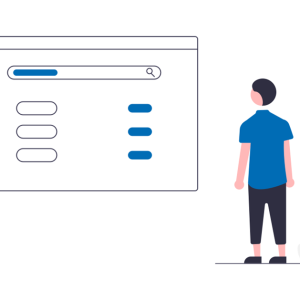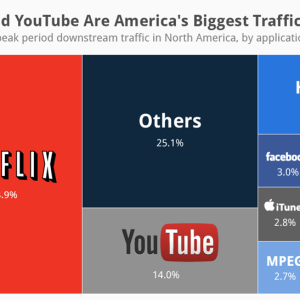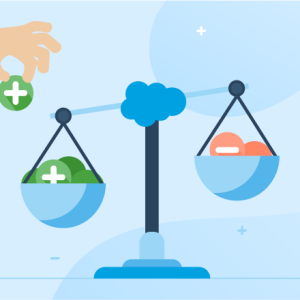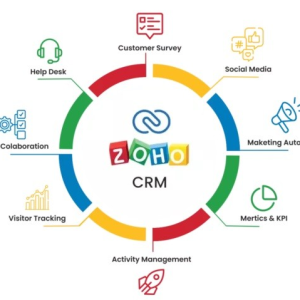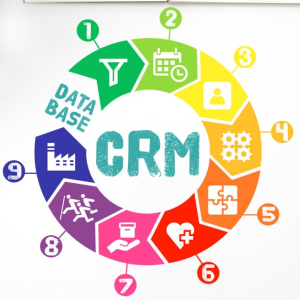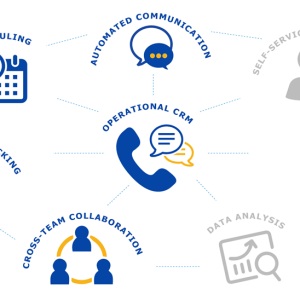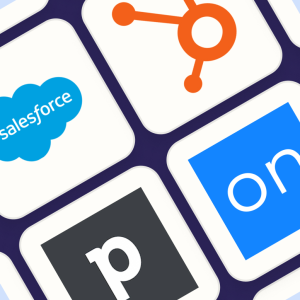Introduction
To be successful in content marketing, you need to track your performance and measure the results. In this guide, we’ll walk you through the 15 key performance indicators (KPIs) that you need to track to measure the success of your content marketing campaigns.
15 key performance indicators (KPIs) to track for content marketing
Content Marketing KPIs #1. Web traffic
One of the most important indicators of content marketing success is web traffic. This metric measures how many people are visiting your website or blog as a result of your content marketing efforts. There are several ways to increase web traffic, including SEO, social media, and email marketing.
Tools like Google Analytics, HubSpot, and Crazy Egg can help you track web traffic and see where your visitors are coming from. With this, you can adjust your content marketing strategy accordingly.
Think of it this way: If you’re not getting any traffic to your website, then it doesn’t matter how good your content is – you’re not reaching your target audience.
Content Marketing KPIs #2. Social media engagement

Another important KPI to track is social media engagement. This metric measures how often people are interacting with your content on social media. The more engagement you have, the more likely people are to see and share your content.
There are a number of ways to increase social media engagement, including using social media ads, promoting your content on social media, and using relevant hashtags.
Consider using social media tools to track your success with content marketing. This will help you make adjustments and improve as needed so that the campaign is a tremendous hit! And with good reason! tools like Hootsuite Insights, Buffer, and Sprout Social can help you track your socials’ output so that it’s always on point for the next best chance at success!
Content Marketing KPIs #3. Email subscribers
Email campaigns (87%) and educational content (77%) are the top content marketing methods B2B marketers use to nurture their audience.
(Content Marketing Institute)
If you’re using email marketing as part of your content marketing strategy, then you need to track the number of email subscribers you have. This metric measures how many people have signed up to receive your emails. The more subscribers you have, the more people will see your content.
There are several ways to increase email subscribers, including using pop-ups, offering free content, and running giveaways.
The number of email subscribers can be tracked with tools such as Mailchimp, Constant Contact, and AWeber.
Content Marketing KPIs #4. Leads generated

Content marketing can also be used to generate leads for your business. A lead is a person who has expressed interest in your product or service. To track this KPI, simply count the number of leads that you generate from your content marketing campaigns.
There are several ways to generate leads from your content, including using call-to-action (CTA) buttons, offering free trials or coupons, and conducting webinars.
Whether you’re a seasoned marketer or just getting started, the number of leads your content can generate is one way to measure its success. That’s why tools like HubSpot and Marketo are so helpful for tracking this data!
Content Marketing KPIs #5. Conversion rate

The conversion rate is the percentage of people who take the desired action after viewing your content. For example, if you have a blog post that drives 100 visitors to your website and 10 of those visitors sign up for your email list, then your conversion rate would be 10%.
There are several ways to increase your conversion rate, including using effective CTA buttons, optimizing your website for conversions, and creating compelling content.
You can improve your conversion rate by using Google Analytics and Optimizely. These tools will allow you to track the success of different parts in a campaign, so that when something doesn’t work out as planned for example if someone isn’t clicking on an ad or filling their cart with products – there are many more options at hand than just cutting it short-temps!
Content Marketing KPIs #6. Sales
The top three primary goals of creating content are boosting sales, building relationships with customers, and increasing brand awareness
(eMarketer)
If you’re selling products or services, then sales are the ultimate metric that you need to track. To measure this KPI, simply count the number of sales that are generated from your content marketing campaigns.
There are a number of ways to increase sales with content marketing, including using effective CTA buttons, creating compelling content, and offering discounts or coupons.
You can track sales data with tools such as Salesforce and HubSpot Sales.
Content Marketing KPIs #7. ROI

Another important metric to track is your return on investment (ROI). This measures how much money you’re making for every dollar you spend on content marketing. To calculate your ROI, simply divide your total revenue by your total costs.
For example, if you spend $1,000 on a content marketing campaign and it generates $10,000 in sales, then your ROI would be 10:1.
Google Analytics is your best friend when it comes to content marketing. You can use this tool not only to measure how well you’re doing but also to see what the return on investment (ROI) has been for every dollar spent!
Content Marketing KPIs #8. Cost per lead

If you’re generating leads from your content marketing campaigns, then you’ll want to track your cost per lead. This metric measures how much it costs you to generate each lead. To calculate your cost per lead, simply divide your total costs by the number of leads generated.
For example, if it costs you $100 to generate 10 leads, then your cost per lead would be $10.
Tracking your cost per lead is important because it allows you to see how efficient your content marketing campaigns are at generating leads. If your cost per lead is too high, then you’ll need to either increase your conversion rate or reduce your costs.
Content Marketing KPIs #9. Cost per sale

If you’re selling products or services, then you’ll want to track your cost per sale. This metric measures how much it costs you to make each sale. To calculate your cost per sale, simply divide your total costs by the number of sales generated.
Tracking your cost per sale is important because it allows you to see how much each sale is costing you. If your cost per sale is too high, then you’re not making a profit on each sale. On the other hand, if your cost per sale is low, then you’re making a good profit on each sale.
What if I told you again about Google Analytics! By using Google Analytics, you are sure to get your hands across all KPIs for your content marketing campaign. That’s right! With this helpful tool in hand and with just a few clicks of the mouse wheel (or taps on an app), not only will it allow for tracking but also yield valuable insights into what products are best suited at different times throughout each day.
Content Marketing KPIs #10. Engagement rate
More than 1 in 4 marketers rank images as the form of content most important for engagement
(HubSpot)
The engagement rate is the percentage of people who interact with your content. This metric can be measured in a number of ways, including likes, comments, and shares. To calculate your engagement rate, simply divide the number of interactions by the number of views.
For example, if your video has 100 views and 10 likes, then your engagement rate would be 10%.
Engagement rate is important because it shows how well your content is resonating with your audience. If your engagement rate is low, then you need to either improve the quality of your content or find a different audience.
Content Marketing KPIs #11. Click-through rate
Personalized subject lines in email outreach increased the unique open rates by 27% and lead to an 11% higher click-to-open rate.
(Experian Marketing Services)
The click-through rate (CTR) is the percentage of people who click on a link in your content. This metric is important to track because it measures how effective your content is at driving traffic to your website or blog. To calculate your CTR, simply divide the number of clicks by the number of views.
For example, if your blog post has 100 views and 10 people click on the link to your website, then your CTR would be 10%.
If you’re not happy with your CTR, then you need to either improve the quality of your content or find a different audience.
Content Marketing KPIs #12. Bounce rate

The bounce rate is the percentage of people who leave your website or blog after viewing only one page. This metric is important to track because it measures how effective your content is at keeping people engaged. To calculate your bounce rate, simply divide the number of bounces by the number of views.
For example, if your website has 100 views and 10 people leave after only viewing the home page, then your bounce rate would be 10%.
This would mean that your content is not effective at keeping people engaged and you need to either improve the quality of your content or find a different audience.
Content Marketing KPIs #13. Average time on page

The average time on a page is the amount of time that people spend viewing your content. This metric is important to track because it measures how engaged people are with your content. To calculate your average time on a page, simply divide the total time spent on your website or blog by the number of views.
For example, if your website has 100 views and the total time spent on your site is 1,000 minutes, then your average time on the page would be 10 minutes. And 10 minutes is a really good average time on a page!
Content Marketing KPIs #14. Social shares
B2C content produces 9.7x more shares than content on B2B sites
(Backlinko)
If you’re promoting your content on social media, then you’ll want to track the number of social shares. This metric measures how often people are sharing your content on social media. The more social shares you have, the more people will see your content.
Social shares for a website can be tracked using several different tools, including Google Analytics and BuzzSumo.
Content Marketing KPIs #15. Drip rate

The drip rate is the rate at which your content is being delivered to people over time. This metric is important to track because it allows you to see how well your content marketing campaigns are performing over time. To calculate your drip rate, simply divide the number of views by the number of days since your campaign started.
For example, if your campaign started 10 days ago and has 100 views, then your drip rate would be 10 views per day. While 10 views per day may not seem like a lot, it’s actually a pretty good drip-rate!
Conclusion
Though there are many different metrics that you can track for your content marketing campaigns, these 15 are some of the most important. By tracking these metrics, you’ll be able to see how well your content is performing and make necessary changes to improve your results. And hiring an agency will make sure that all these KPIs are being tracked for you! Contact us today to learn more. We will be able to track the metrics listed above, as well as any other metrics that may be important to your specific campaign.
Good luck! Do you have any questions about content marketing KPIs? Let us know in the comments below! Contact us today at 12channels for your next big content marketing campaign!


